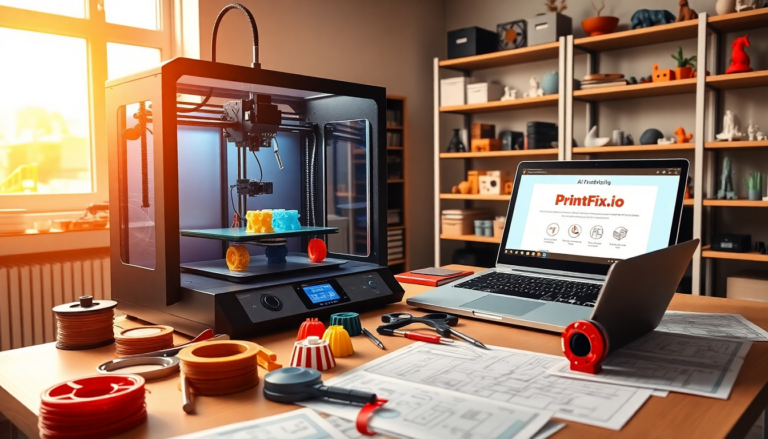Argomenti trattati
The rise of AI in various sectors has sparked not only curiosity but also lively debate, especially in niche markets like 3D printing. As enthusiasts tackle technical challenges, one crucial question stands out: Can AI truly act as a reliable troubleshooting partner for 3D printing issues? Enter tools like PrintFix.io, which promise to streamline diagnosing and fixing printing problems. But as we delve into the capabilities of these AI tools, it becomes evident that while they offer valuable insights, they’re not without their limitations.
Understanding AI-driven solutions for 3D printing
PrintFix.io is marketed as an AI-powered assistant designed to address common 3D printing failures. The platform is user-friendly, encouraging users to enter details about their specific printer model, the type of filament they’re using, and the problem at hand. Within moments, it churns out a list of potential solutions. This can be a game-changer for beginners who often feel daunted by the technical jargon and troubleshooting processes that flood online forums.
However, the effectiveness of such AI tools can vary quite a bit. In my experience, while PrintFix might provide some general advice, it can also throw out suggestions that feel outdated or overly generic. This is particularly true if it leans heavily on data from popular models like the Creality Ender 3. Given that the consumer 3D printing landscape is constantly evolving, advice based on older models might not always hold water for newer technology, like Bambu Lab printers.
This reliance on historical data underscores a critical aspect of these AI systems: their recommendations are shaped by past user experiences documented across various platforms. Unfortunately, this can lead to a disconnect as new devices and techniques emerge in the market. So, while AI can certainly help streamline troubleshooting, it needs to be paired with human insight and expertise.
The role of human expertise in 3D printing troubleshooting
Despite the strides made by AI, the value of human advice remains irreplaceable in the 3D printing community. Platforms like Reddit and Facebook host numerous groups dedicated to specific printer brands and models, where users share real-time advice and solutions based on their firsthand experiences. This community-driven knowledge often proves to be richer and more nuanced than what an AI can provide.
For example, when I experimented with ChatGPT regarding specific printing issues, it offered a more tailored approach once it grasped the particulars of my printer. This adaptability is a hallmark of human interaction—something AI still struggles to replicate. The immediate feedback and customized advice from fellow enthusiasts often lead to quicker and more effective solutions.
Moreover, many reputable 3D printer manufacturers maintain wikis and resources packed with troubleshooting tips and maintenance guidelines. These resources are crafted by experts who understand the intricacies of their products, providing users with trusted information that AI tools may not fully encompass.
Conclusion: Balancing AI tools with community knowledge
AI tools like PrintFix and ChatGPT can undoubtedly assist in tackling common 3D printing challenges, but viewing them as standalone solutions would be a mistake. The synergy between AI assistance and community knowledge creates a more comprehensive approach to troubleshooting. By embracing this dual strategy, 3D printing enthusiasts can navigate complexities with confidence, ensuring a smoother and more rewarding experience in their printing endeavors.
As technology continues to advance, it’s clear that the 3D printing landscape will likely see a deeper integration of AI tools. Yet, the human element will always play a vital role in enhancing the learning curve, ensuring that troubleshooting remains an accessible and supportive journey for all users.

